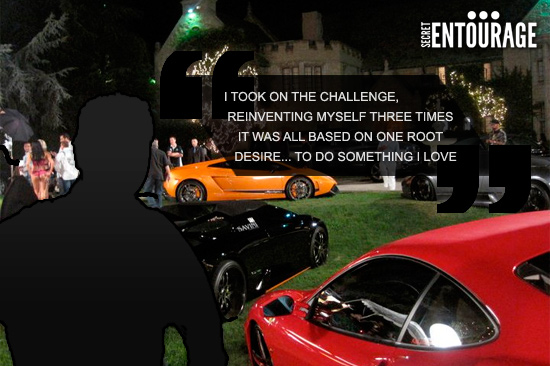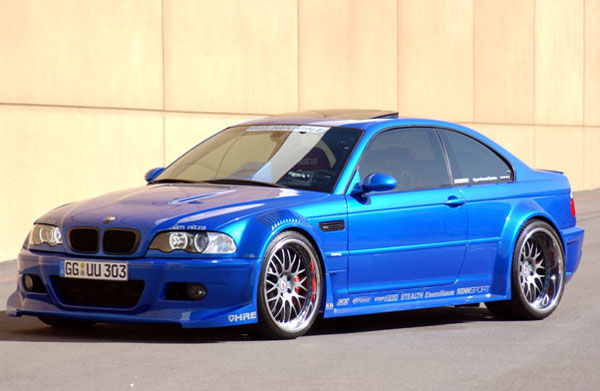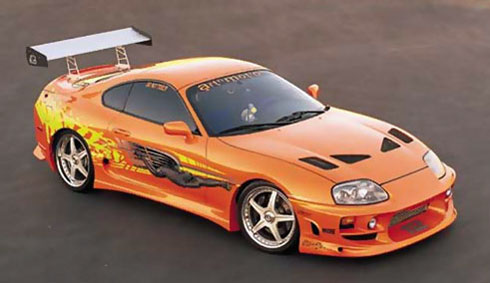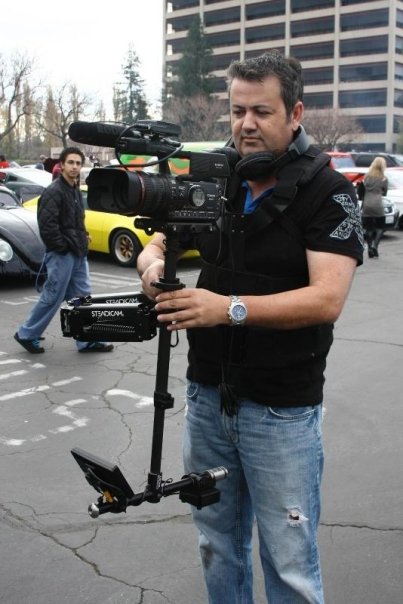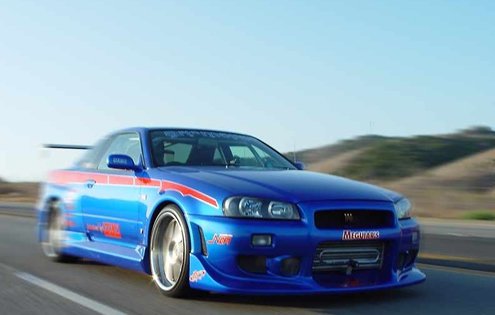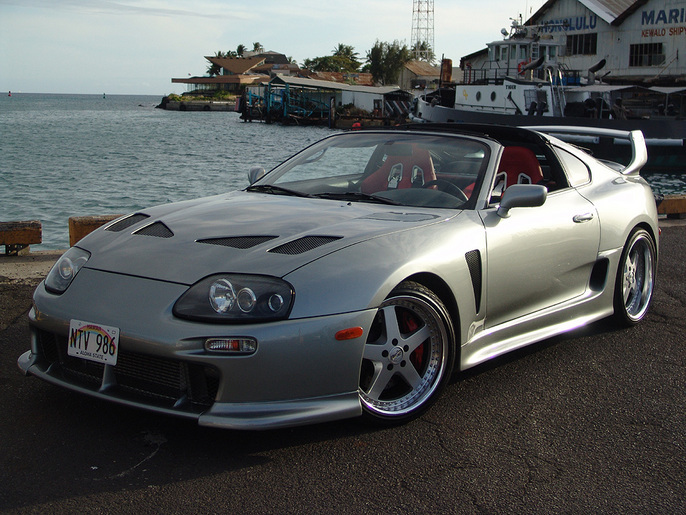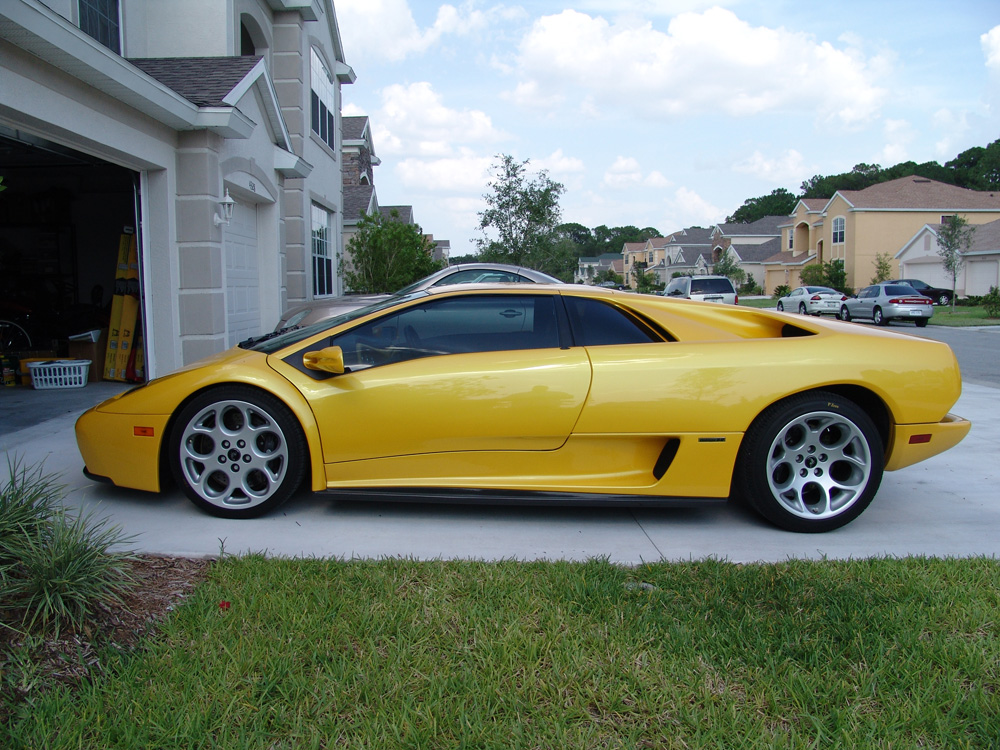Perhaps one of the most influential people among the import car culture, Craig Lieberman has helped shape what it has become today through his involvement in the “Fast and Furious” movie franchise while at the same time directing the vision of many car part companies. While cars were Craig’s interests, his true passion remained in media production for companies far and wide ranging from Playboy to museum history. Read more as Craig shares with us how he became the car guru early in his career and then leaving it all to form his production company…
First, I want to thank you for taking a moment to talk to us. Tell us a little about your background…
I was born in New York in 1967 but only lived there briefly before settling in Southern California when I was 4 years old. As a child of a divorce and a “latch key” kid, I used the alone time to express my creative side. This manifested itself through hand drawings, model ship building and acting. This was before video games and at a time when TV had 13 channels. Even then I knew I wanted to work in a creative field. One of my strongest passions was the automotive hobby. This became an addiction and eventually, I went through more than 40 cars, most since 1991.
Haha believe us when we understand how cars are addicting. Where did you go to college and where did that lead?
I attended Cal State Northridge for Film and Television and Marketing, but my first real job was working in PR for Northrop on the B2 Bomber project. I was an aviation nut and military history fan back then, a hobby that is now taking me down a new road.
After spending some time in Japan, I came back and settled with a wonderful young lady and had a son, Tyler, who is now 20 years old. Although his mom and I parted company, the move from that part of California to another opened new doors.
California is the prime car culture capital of the world. How was the relocation to Southern California?
2001 was my tenth year in Orange County, final settling in Ladera Ranch, a bedroom community near Coto De Caza. While my humble abode was certainly not lavish, it was within my means and the pool and hardscape made it a nice retreat from the daily grind of building a business. As I soon found, the unpredictability of revenue streams in the earlier stages of building a business coupled with the needs of reinvesting in the business preempted my car addiction. As a result, I eventually moderated my pace of vehicle acquisitions but the period from 2000 to 2007 saw me soldier on at a frantic pace.
Did you have any other endeavors to help pay the bills and fund your lifestyle?
During this period, I fed my addiction by teaching racing or performance driving for companies like Audi N.A., Goodyear Tires and General Motors. This was a sidebar to my corporate job in Marketing and as an adjunct to my role with Universal Pictures.
I am interested to hear about your involvement in Fast and Furious franchise but first, what made them choose you for consulting?
Quite by accident. While manning a display with one of my cars at a car show, I was approached by a studio representative. At the time, I was working for Petersen Publishing who was publishing magazines specifically targeting the tuner market. With a long roster of contacts, they felt that I could provide input on authenticity and assist with acquiring parts for the vehicles. From there, I seemed to be the go to guy for productions relating specifically to tuner cars, having served more than a dozen TV shows (i.e. CSI, Boston Public, The Division, Providence), motion pictures and video games.
I’ve served with several companies in the automotive sector before I grew tired of seeing the unappreciative prosper from the efforts of teams with whom I’ve worked, including Petersen Publishing (Hot Rod magazine), Meguiar’s, Eibach Springs and NGK Spark Plugs. By 2001, my car addiction landed me a role working with Universal Pictures on the “Fast and Furious” franchise. This lasted through the first three films of the series and other clients like EA Games, Goodyear Tires.
That is awesome, what were your duties for the Fast and Furious movies?
In Universal’s “Fast and Furious” franchise, I served as a Technical Advisor, Picture Car Advisor, Marketing consultant, DVD/Home Theater consultant and was also featured as a host of a behind the scenes feature. During this period, I picked up my first camera since college and was asked to obtain footage for their behind the scenes features. I quickly fell back in love with the art and by 2007, I had forsaken my role in the corporate world for entrepreneurship.
What was your first step toward entrepreneurship after the Fast and Furious movies?
Soon after my duties were completed in Hollywood, I realized that this was my calling. I founded ImaginateMEDIA, a small production company that focused first on automotive content, but expanded to do corporate video, wedding videos, whatever paid the bills. It didn’t matter…I was having fun and enjoying the creative process. I often lost money on projects…simply because I invested many more hours than what I quoted, viewing each completed work as a global resume, for all to view. In some cases, overruled by clients, I worked on projects that were not as I envisioned, but I worked hard nonetheless.
It’s all about the hustle… What was your first big contract?
Early on, my first big contract was doing a show called “Bikini Driving School.” Knowing little about digital editing, I spent endless hours reading and researching the processes. My early work, rough as it was, taught me what I needed to know to invest in the right equipment and to develop programming for the digital media. Over the next few years, I focused on honing my craft. Working with corporate clients on shoestring budgets is not always the path to creative excellence, but it does keep the doors open.
You mentioned to us that you’re working with Playboy! That’s a dream job. Tell us more…
The first payoff came in 2010 when we landed a deal with Playboy TV. We produced segments of their series “Badass,” an action sports show in which our team was asked to create the story lines and handle the production for the segments. It was not only an amazing opportunity, it was an exercise in working lean but retaining creativity. Thanks to the contributions of many friends/colleagues, I am proud of the projects on which we’ve worked together.
What does the future of ImaginateMEDIA look like?
Later this past year, my company joined forces with others and formed “LetterSix,” which was a natural outgrowth of our mutual work in marketing and digital media. Together, our clients are varied but all have creative vision. The future prospects are bright and exciting to ponder. The LetterSix team is comprised of brilliant web developers headed by Ian Ray, a social media marketing expert (Joy Loo) and our Account Manager, Gary DePriest, who has a long history of growing businesses. We merged simply because we were tired of watching “big name” agencies get the big contracts…only to have them subcontract the work to us individually. We had all worked for big agencies in one capacity or another and their exploitive use of human resources in the interests of having fancy offices seemed counter intuitive…when a client looks for creativity, why isn’t every dollar being spent on the creative process? We decided to merge, forego the big office and studio and instead work as a strike team, getting immersed in the client’s culture and execution initiatives and creative projects with great zeal and passion.
What were some of the challenges and risks you faced while building your business?
I’ve faced worse challenges. In recent years, I’ve left two six figure per year jobs, terminated a marriage and downsized as much as possible to segue into my chosen field. Doing this during a recession was not my choice, but I took on the challenge. Reinventing myself three times since 1988, it was all based on one root desire: to do something I love….not so much for the money, but the happiness.
Sacrificing what you have for what you want is always painful….and that’s exactly where I was. I had a good job, making decent money, at a company I liked. But the owners had different visions and after years of beating my head against the wall, I decided that life was about being happy. I left the job and struck out on my own. I took whatever consulting gigs that came my way to supplement my income and reinvest in growing my business’ capabilities. It meant downsizing…the residence, the number of cars, watches and vacations, but only because I started so late. For people in their 20’s going to college, they know of what I speak…they’re sacrificing a decent job for what appears to be good money to stay in school.
Can you explain what you mean by reinventing yourself?
Reinventing myself seems to be a hobby for me. Although going to school for Film and Television, in 1989, I was in a Public Relations position for a defense contractor. 2 years later, I was knee deep in learning the intricacies of the internal combustion engine to perform my duties for a Japanese company which lead into a Motorsports Marketing position. Years later, I was reentering the Film and Production world while clinging on to my roots in Motorsports Marketing. Not counting the switch to a new computer system and the late nights learning 8 different software programs in 2 years, the changes have still been sweeping.
On video production, how do you manage your time with meetings, filming, and editing? What kind of software and hardware are you using?
Indeed production is a challenge. I could not accomplish any of it without my team. I have many colleagues upon whom I rely. While I typically handle editing, the actual production process requires good camera operators and production assistants. What makes my team different? Passion….they are all passionate about their work and spend hours honing their craft.
Starting in Adobe Premiere Pro, I quickly grew to hate it. I switched to MAC in 2009 (having never touched one before) and now work in Final Cut Pro 7, Adobe After Effects, Premiere (If I HAVE to), Motion, Color, LiveType, Cinema4D and PluralEyes, among others.
What’s your best advice for people looking to get started in the video production industry?
RTFM. Read the Freakin’ Manual. Software programs for editing are complex. Like anything else, full daily immersion is required to learn the ins and outs. But the manual can be supplemented with YouTube tutorial videos. Still, the basic knowledge needs to be already ingrained….things like composition, lighting and story telling. In short, quickly assess your strengths and weaknesses and augment those by surrounding yourself with people better at it than you….you never want to be the smartest guy in the room.
You’ve shared great information about your entrepreneur side. Give us a rundown on your car addiction.
- The orange Supra from “The Fast and The Furious”
- The silver Nissan Skyline from “2 Fast 2 Furious”
- A 2002 Porsche 996 Turbo
- A 2005 Mercedes SL600
- A 1998 Lamborghini Diablo
- A 2001 Lamborghini Diablo
- A 2002 BMW M3 (widebody…search “Uber M3”)
- A Lexus GS430
- An 850hp Toyota Supra Turbo
- A drift car (Nissan 240SX)
- An Audi RS4
- And my current ride, a BMW 750Li.
WOW! Such a wide range of cars. Which one is your favorite?
Certainly my Porsche 996TT. Dollar for dollar, one of the most potent, reliable, durable and refined cars ever built. I do miss my R34 Skyline, but not in the same way.
The R34 Skyline GTR is the holy grail of Japanese sports cars. What’s the story on that?
The R34 was the FIRST one brought to America legally. It was owned by Motorex so there were no legal issues concerning the car.
Why the huge transition from tons of sports cars to a comfy luxury sedan in the BMW 750Li?
I chose a BMW 750Li because of the roominess. My current business often requires hauling of camera gear and people to filming locations. This car provides the comfort, space and performance that serves me well.
It must have been cool to see your own cars used in a major production movie. How was that like? What did you expect would happen?
Most of my highly modified cars were built for movie roles. As such, they had to be over the top to meet Hollywood’s stereotypical view of these cars. Some of the cars went on to receive sponsorship and appearance monies from various companies, turning them into revenue streams.
My first Supra was bastardized by Universal for the movie. As such, it turned into an unsatisfying ownership experience. My second Supra, the 850hp car, was a fantastic car. It was a rocketship and commanded your full attention. The GTR was weighed down by the extra accessories installed to make the car suitable for the second movie. It too morphed into something beyond my original scope and vision. Nevertheless, it drew attention and satisfied my craving to own the ultimate tuner car.
I think many people can thank you for the Supra’s value appreciating over the years. How did these tuner cars compare to the legendary Lamborghini?
Both of my Diablos were quirky and had idiosyncrasies unique to the previous generation Lamborghini’s. While not good track cars, to me, they were the epitome of the exotic car experience…raw, visceral and unapologetic. In that regard, they were satisfying. Beyond that, they were little more than decorative.
Before we wrap it up, I want to get your thoughts on the direction of the car modification industry and where its heading.
Right now, because of the recession, we’re seeing a movement of the youth away from car modifying. A decade ago, a person would modify nearly every component of their car. Today, it’s more about wheel/tire packages, exhaust upgrades and perhaps a bit of audio upgrades. As the youth market has matured, so too have their tastes. Today, young people aspire to own BMW’s, Porsche’s, Benzes and other euros…if they don’t own them already. With the advent of hybrids, the future is difficult to predict except to say that most people will still look for styling mods for whatever vehicle they drive.
Where do you see yourself in 5-10 years?
Easy question: more of the same….growing my business, learning new techniques and hopefully, doing independent films a la Guy Ritchie BMW Films. I want a feature at Sundance. Something I have written and directed…something too powerful to fulfill Hollywood’s insatiable appetite for stereotypical portrayals of characters and racial misperceptions…something that makes you adore and hate the characters and invokes a powerful emotional response.
While many challenges lay ahead, I continue to focus on building the business. It’s meant many sacrifices and 2010 was a challenging year. But it was also a building year, having now compiled a long roster of resources, equipment and trusted colleagues and as a result, the outlook is bright.
Lastly, what is your definition of success?
To that end, I suppose everyone’s definition of success is different. Mine is simple: making a living doing what you love, being surrounded by those you love, equals success.
Here are some clips showcasing Craig’s great video production work:
We want to thank Craig for sharing his GREAT secret to success story with us. If you are looking for any kind of production work, we highly recommend Craig and his team at Lettersix. You can find them at:
Website: LetterSix
Email: info@lettersix.com
Phone: 949.542.6610
